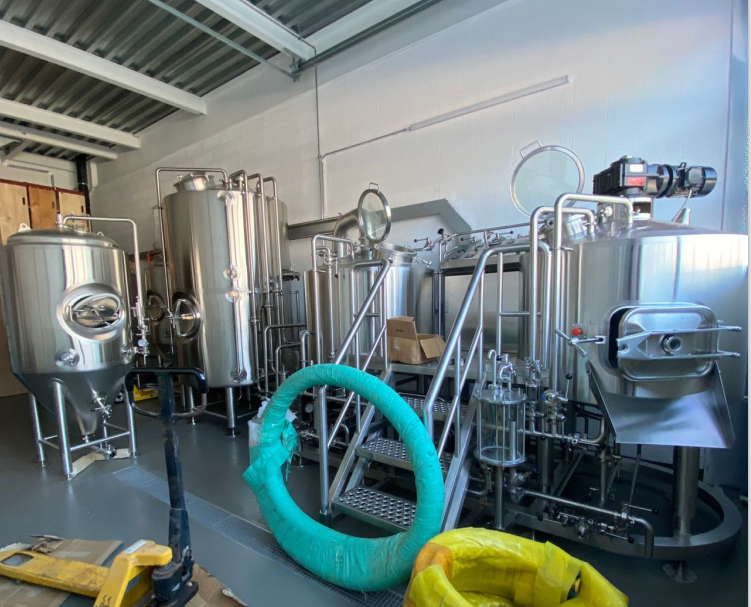Mastering the Art of Brewery Equipment
1. Introduction to Brewery Equipment
Brewing beer is an age-old art that has evolved significantly with the advent of modern technology. To craft that perfect pint, brewers rely on a wide array of specialized equipment that facilitates each step of the brewing process. From mash tuns to fermentation vessels and packaging machines, brewery equipment plays a crucial role in ensuring the quality and consistency of the final product.
2. The Brewing Process: Understanding the Basics
Before delving into the intricacies of brewery equipment, it’s essential to grasp the fundamentals of the brewing process. Understanding how each stage contributes to the final flavor profile allows brewers to make informed decisions when selecting equipment.

3. Essential Equipment for a Brewery
In this section, we will explore the key pieces of equipment found in almost every brewery. These tools form the backbone of the brewing operation and are vital for turning raw ingredients into a delectable brew.
3.1. Mash Tun
The mash tun is where the mashing process occurs, converting malted grains into fermentable sugars. We’ll delve into its design and function and discuss different types of mash tuns available for brewers.
3.2. Brew Kettle
The brew kettle is where the magic happens – hops are added to the sugary liquid produced in the mash tun, imparting flavor and aroma to the beer. We’ll explore various features to look for in a brew kettle to ensure optimal brewing results.
3.3. Fermentation Vessels
Once the wort is ready, it needs a cozy home to ferment into beer. Fermentation vessels come in various shapes and sizes, each influencing the beer’s final characteristics. We’ll discuss the differences between traditional fermenters and more innovative options.
3.4. Cooling System
Temperature control during brewing and fermentation is crucial. A reliable cooling system prevents unwanted off-flavors and ensures yeast performs at its best. We’ll explore different cooling methods and their impact on the brewing process.
3.5. Cleaning and Sanitizing Equipment
Proper hygiene is non-negotiable in brewing. We’ll cover the essential cleaning and sanitizing equipment necessary to maintain a sterile brewing environment and prevent contamination.
3.6. Bottling and Packaging Equipment
Once the beer is ready, it needs to be packaged for distribution and consumption. We’ll discuss various bottling and packaging options, from manual fillers to high-speed bottling lines.
3.7. Quality Control Instruments
Ensuring consistent quality is vital for any brewery’s reputation. We’ll explore the instruments used for quality control, such as hydrometers, refractometers, and pH meters.
4. Choosing the Right Brewery Equipment
Selecting the appropriate brewery equipment can be a daunting task. In this section, we’ll provide guidance on factors to consider when making these critical decisions.
4.1. Determining Your Brewing Capacity
Understanding your production requirements is essential to choose equipment that matches your output needs. We’ll discuss how to assess your brewing capacity accurately.
4.2. Considering the Brewing Space
Available space can significantly impact the choice of equipment. We’ll explore space-saving solutions for breweries with limited square footage.
4.3. Budgeting for Brewery Equipment
Brewery equipment can be a significant investment, and budget considerations are vital. We’ll offer tips on budgeting effectively without compromising on quality.
4.4. Evaluating Equipment Suppliers
Choosing a reputable and reliable equipment supplier is crucial. We’ll discuss factors to consider when evaluating potential suppliers.
5. Brewery Equipment Maintenance and Cleaning
To keep your brewery running smoothly, regular maintenance and cleaning are essential. In this section, we’ll provide best practices for equipment upkeep.
5.1. Cleaning and Sanitizing Procedures
Detailed cleaning and sanitizing routines are crucial to avoid contamination and off-flavors. We’ll outline a step-by-step cleaning process for different equipment.
5.2. Preventative Maintenance
Preventative maintenance can save time and money in the long run. We’ll offer tips on creating a maintenance schedule and addressing common issues before they escalate.
5.3. Troubleshooting Common Equipment Issues
Even with the best maintenance, equipment issues can arise. We’ll discuss common problems and how to troubleshoot them effectively.
6. Innovations in Brewery Equipment
The brewing industry is continuously evolving, and so is the technology behind brewery equipment. In this section, we’ll explore some exciting innovations that are revolutionizing brewing.
6.1. Automated Brewing Systems
Automated brewing systems are streamlining the brewing process and increasing efficiency. We’ll look at the benefits and potential drawbacks of automation.
6.2. Energy-Efficient Brewing Equipment
Sustainable brewing practices are gaining traction, and energy-efficient equipment plays a significant role. We’ll discuss how breweries can reduce their carbon footprint.
6.3. Sustainable Brewing Practices
Environmental responsibility is becoming a priority for breweries worldwide. We’ll explore eco-friendly practices and equipment options for sustainable brewing.
7. The Future of Brewery Equipment
As technology continues to advance, the future of brewery equipment looks promising. In this section, we’ll discuss potential advancements and their implications.
8. Conclusion
Brewery equipment is the backbone of the brewing industry, enabling brewers to create delightful beverages that captivate taste buds worldwide. Understanding the different types of equipment and selecting the right tools for your brewery is crucial for success. By staying abreast of innovations and implementing best practices in maintenance and cleaning, breweries can continue to thrive and delight beer enthusiasts for generations to come.
Share this entry
Interested in learning more about Brewing Systems including additional details and pricing information? Please use the form below to contact us!
YOLONG BREWERY EQUIPMENT FAQS
- Commercial Brewery / Craft Brewery / Microbrewery / Nanobrewery
- What is The Difference Between Craft Beer and Industrial Beer?
- The Bespoke Differences In Custom Brewing Systems
- Everything You Need to Know About Kettle Souring
- How to Choose Brewing Equipment for Your business?
- How To Choose The-Best Partner To Build Your Commercial Microbrewing System?
- Two Detection Sensors That You Need To Use In Your Brewhouse System
- Remote Control Applications in Brewing Equipment/How does it work?
- How To Clean Your Brand New Brewery Tanks?

